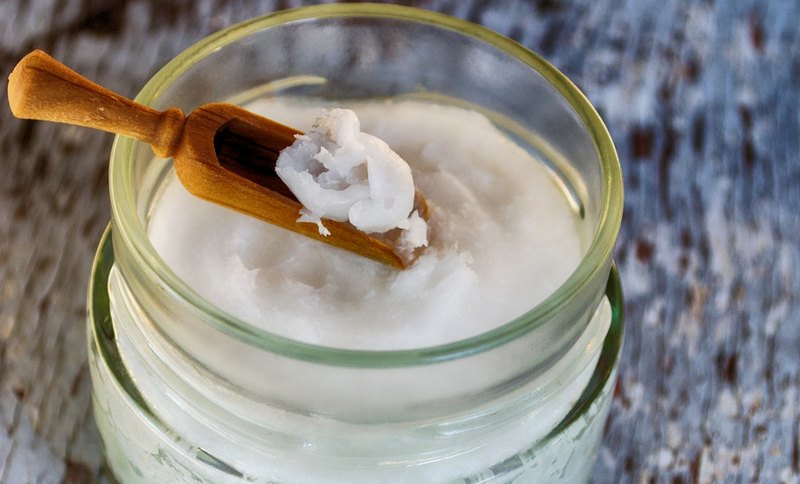You can use coconut cream for different things, it can be used for making goodies and desserts as well as a lot of cultural dishes. Coconut milk and coconut cream are different, it is just like how dairy milk and dairy cream are different. One of those versatile items you can have at home is coconut cream and it can be purchased from a store or if you can, you may go ahead to make yours.
Coconut cream is usually found inside a can when it is purchased and almost all recipes do not need a lot of creams whenever you want to use it. As a result, you will have a coconut cream can that is left open and you will need to preserve it unless you want to waste the leftovers. You should always have an option to store your coconut whenever there are leftovers.
What we want to find out is whether or not your coconut cream can be preserved and if both store-bought and homemade variety can be stored similarly. Both of them can be preserved in the freezer or the refrigerator. You should not preserve store-bought coconut cream inside the can, you should find an alternative storage method.
We want to find out everything you should know about preserving coconut cream, you need to continue reading to find out all we have in stock for you concerning coconut cream.
A Coconut Cream Guide
More than the title suggests, coconut cream can be considered more versatile. Anytime you notice the name coconut, you should not dismiss it immediately. You can use coconut cream for several things and you are likely to never have thought about some of them before. When you talk about dairy-free and vegan-friendly recipes, coconut cream has been indicated to be an item used in these recipes.
Conventionally, people think you can only use coconut cream for baking purposes. However, it is very popular in cultural and Asian dishes, check below for some of the popular uses of coconut cream:
- Frosting
- Dairy-free ice cream
- Coconut cream pie
- Used to sweeten and thicken whole-grains.
- Milkshakes
- Soup
- Smoothies
- Parfaits
- Tiramisu
- Chocolate (or another flavor) mousse
- Thai green curry
The highlighted above are only a few ideas that coconut cream can be used for in case you don’t know how you want to use it. It is a very versatile ingredient that can be used in a variety of things. If you have any recipes that need cream, you can substitute coconut cream for it, most especially if you want something dairy-free.
Coconut Milk vs. Coconut Cream
Coconut milk and coconut cream are technically different but they can be considered very close. They are primarily different in that coconut cream is considered to be a fully-fat product while coconut milk is a bit more processed. They are both made essentially in similar ways. Coconut cream and coconut milk are both extracted from the coconut meat that is simmered inside water for the extraction of the milky creamy goodness offered by the coconut.
In this process, there is always a thin layer and a thick layer. While the thick layer will be combined with a piece of guar gum for the stability of the cream, the thin layer will be processed directly into the milk. Coconut milk will contain some other sweeteners or additives but coconut cream will not.
When you compare their ingredients, you will notice that there are various minerals enriched in coconut milk and it is often sweetened artificially. However, only natural minerals are present in coconut cream, it remains in the natural state.

Making Coconut Cream
Coconut cream can be made at home if that is what you want, perhaps, you don’t want to buy the one that is canned from the store. Coconut cream contained in a can is very much good and you will not need to be concerned about any additive because guar gum is the only added modification. We will like to show you how you can simply make your coconut cream:
- First, get grated coconuts. You are recommended to get your coconut meat fresh and then grate it yourself if you want to make your coconut milk or cream. The water you find inside the coconut should be reserved.
- Get a saucepan and put the grated coconut inside it. Cover the grated coconut with the reserved coconut water.
- Allow the coconut water to slowly boil under medium heat. Ensure you frequently stir as the water gets heated.
- Once the water is boiled, remove your pan away from the hot heat and then cover the pan. Leave it to become cooled while covered to the temperature of the room.
- You will then use a strainer and cheesecloth to dump all content inside the pan before you strain them inside a prepared bowl.
- Immediately you are done straining the liquid, proceed to squeeze the leftover cream out of your cheesecloth into your bowl.
- The coconut cream is now ready.
What we have here is only a simple way of making your coconut cream. Don’t forget that you can also use coconut cream that is canned, both of them can be preserved the same way.
Preserving Coconut Cream
It is an easy thing to preserve coconut cream. The steps are straightforward and there is nothing extraordinary or challenging when you prepare the cream for the process of preservation. You only need to take note of some details as you follow the simple process.
Coconut cream can either be preserved inside the freezer or the refrigerator. It all depends on how long the coconut cream will be preserved. Once you are not going to use the coconut cream within 7 days that you have made it or opened it, you should just proceed to freeze it.
You can store coconut cream within a fan just until the can is opened. At that particular point, you might need to use a method to seal-store them. You can do this either by repurposing a bottle that has a lid or a cover or put it inside a sealable storage container. Irrespective of the method you use, the coconut cream should be stored in an air-tight container that does not allow leaking from the container or outside air to enter.
Preserving your Coconut Cream inside the Refrigerator
- Put your freshly made or opened coconut cream into an air-tight container. Ensure the container leaves up to ½ inch headspace within it.
- Tightly seal your container and put it inside the refrigerator.
- You can allow it to remain stored for about 7 days inside the refrigerator.
- Whenever you remove it from the refrigerator, it needs to be stirred before you use it.
Preserving your Coconut Cream inside a Freezer
- Put the opened or freshly made coconut cream inside a freezable air-tight container.
- Ensure the container leaves up to ½ inch headspace within it because frozen cream usually expands.
- Tightly seal your container and put it inside your freezer.
- The coconut cream can be stored inside the freezer for about 6 months if you do it properly.
- Whenever you are ready to use it and you remove it from your freezer, allow it to defrost inside the fridge for a minimum of 24 hours before you attempt to heat or use it.
Preserving coconut cream has never been a difficult situation and as you can see, the process is quite swift. You don’t need to spend much effort and it is quite an easy thing to do. It is also very easy when you want to use the coconut cream following preservation. It can even be heated if needed.
What you should remember is that you need to allow the coconut cream to defrost for a minimum of 24 hours when you want to use frozen coconut cream. After these 24 hours, you may even still notice that it is still frozen, but you can still use it as you would normally do.
Related Questions
Will Coconut Cream Replace Heavy Cream in Recipes?
Heavy cream has similar consistency and texture as coconut cream and it means you can use coconut cream as an alternative to heavy cream in recipes most especially for dairy-free options. Use them in an equal ratio when you want to do the substitution.
How Can You Tell if Coconut Cream Has Gone Bad?
You can test coconut cream to find out if it has gone bad just the same way you will do for dairy milk or cream. You will notice a rancid or sour smell when your coconut cream has become bad. If it is inside the refrigerator, you might notice that the container is bulging or swelling. If you notice either of the signs, throw the coconut cream away. The separation noticed with the cream is not an indication that it is spoiled. Stir it and then use it. Once there is no offensive sour smell, you are good to go.


